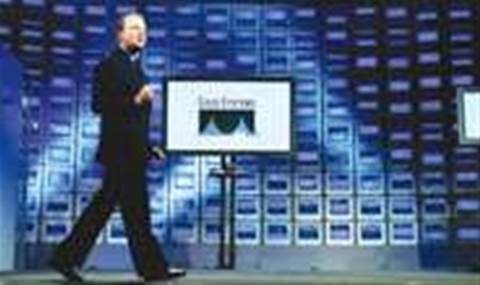Network equipment giant Cisco says it wants to revolutionise the datacentre with its Unified Computing System (UCS) strategy, which combines elements of its traditional networking technology with server infrastructure.
Speaking at the UCS launch event last week, Cisco chief executive John Chambers said that UCS would provide a new datacentre architecture based on unifying “compute hardware, network and storage access, with the power of virtualisation”.
Firms can expect UCS to reduce capital expenditure in the datacentre by 20 per cent and operational expenditure by 30 percent, he said.
Cisco said the datacentre architecture would incorporate a new server product, the UCS B-series blade server containing Intel’s latest chip, the soon-to-launch Nehalem processor.
No technical specifications were announced at the launch, but Cisco’s designate executive vice president Rob Lloyd said more details would be released in April.
So far, Cisco has rolled out test systems to 10 beta sites and plans to carry out further trials at selected businesses.
One customer piloting the technology is IT service provider Savvis, although Chambers said there are also financial, automotive and service provider clients testing the system.
Cisco has attracted some heavyweight support, with leading figures from storage vendors, IT services firms, virtualisation vendors and systems management companies, all joining Cisco to promote its UCS announcement (see below).
Delivering that kind of joined-up approach to enterprise IT certainly addresses some of the most pressing concerns for IT leaders, said David Roberts, chief executive of blue-chip user group The Corporate IT Forum.
“We have constantly called for suppliers to work more collaboratively to effect seamless integration and interoperation of infrastructure components,” said Roberts. “So to see Cisco take a lead in bringing these major players together to deliver value for the user is potentially very positive.”
Organisations are focusing on reducing the cost of datacentre operations, said Roberts. “This strategy targets a key area for corporate users today, and could offer real opportunities to help meet business cost and agility requirements,” he said.
But while the potential to manage the entire datacentre infrastructure from a single console might appeal to firms looking for short-term savings, IT leaders should be cautious, said Mark Blowers, senior research analyst at Butler Group.
“There is not much technical detail attached to Cisco’s offer yet,” he said. Furthermore, given the existing complexity of today’s enterprise datacentres – especially for firms that have undergone extensive mergers and acquisitions – there may be little appetite for introducing yet another new system, warned Blowers.
In some cases UCS may make the datacentre even more difficult to manage. “Although maybe if you have a greenfield site, Cisco’s offer might stack up,” he said.
Nevertheless, Cisco’s ambitious plans are certain to send reverberations throughout the IT industry. It will not have gone unnoticed at IBM and HP that Cisco is encroaching on their territory.
“One area where CIOs could be questioning the Cisco offer is that it has no experience with the compute arm of its datacentre offering, whereas HP and IBM have had years and years of experience at this,” said Blowers.
And while Cisco will be hoping to confound those doubts, it is likely that IBM and HP will be exploring counter measures of their own.
The war for dominance in the datacentre has entered a new chapter.
What Cisco’s partners had to say about UCS
Cisco said UCS would be an open system allowing Microsoft, VMware and other virtualisation packages to run on top of the hardware.
VMware chief executive Paul Maritz said his customers were “reaching for new levels of flexibility and efficiency”.
“There is no more debate as to whether virtualisation is a good strategy, but it is incumbent on us to remove the roadblock from the current level of servers that have been virtualised by businesses. We’re trying to move our software from enterprise-grade to cloud-grade – basically attempting to achieve cloud-like levels of service,” he said.
Microsoft’s president for server and tools business, Bob Muglia, said that while all customers were looking to save money through virtualisation, there is also a chance “to save people costs in datacentre management”.
EMC chief executive Joe Tucci described UCS as “game changing in terms of speed, cost, scale and eliminating complexity”.
One of the current conundrums for datacentre managers is how to increase the percentage of servers being virtualised, while making the resulting virtual infrastructure easier to manage.
BMC chief executive Bob Beauchamp said what was needed “was a single pane of glass to manage all firms’ virtual infrastructure”.












.jpg&w=100&c=1&s=0)
_(8).jpg&w=100&c=1&s=0)









